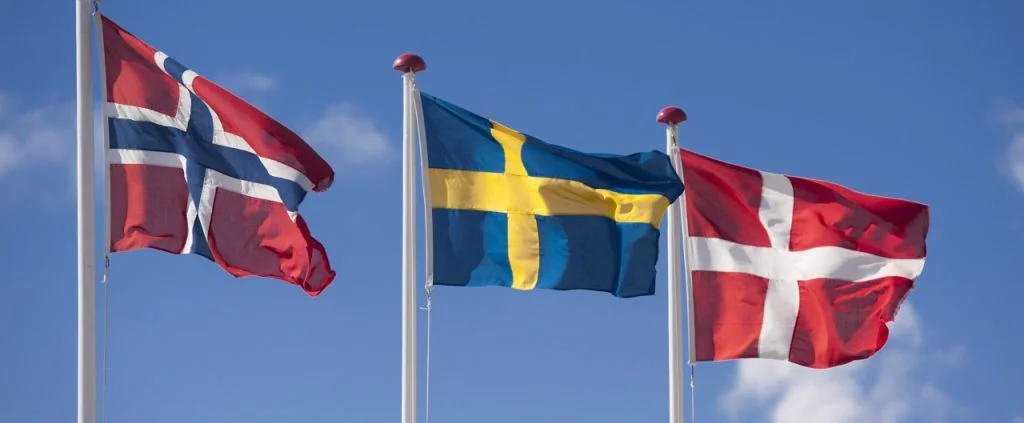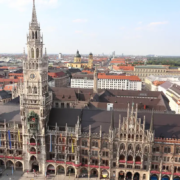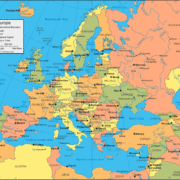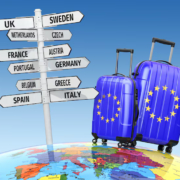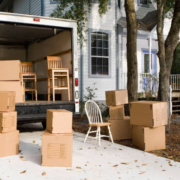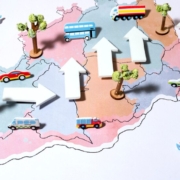Removals Company to Scandinavia
Removals Company to Scandinavia | Euroremovals!
So, you want to move to Scandinavia? Upping sticks and moving somewhere new is not always easy – and Scandinavia has its fair share of hurdles and administrative headaches for incoming expats to leap over. But with some careful planning and a healthy dollop of patience, you’ll soon be settling into your new life in Scandinavia. Moving to Scandinavia: Here’s a step-by-step guide prepared by the Removals Company to Scandinavia Euroremovals!
The benefits of living in Scandinavia are plentiful – there’s a reason why it’s one of the top destinations for expats around the world. As well as good job opportunities, high salaries and a great work-life balance, internationals in Scandinavia enjoy a high quality of life and a convenient, central location for exploring the rest of Europe.
Salaries Denmark, Norway, Sweden
On the downside, however, Scandinavian countries are renowned for their heavily bureaucratic administrative processes, and some expats report finding it difficult to settle into life in the region. Removals Company to Scandinavia Euroremovals can most certainly help with an advice how to overcome this.
How to move to Scandinavia: A step-by-step checklist
To help you navigate the process of moving to Scandinavia and ensure you get settled sooner rather than later, Removals Company to Scandinavia Euroremovals has put together this step-by-step checklist for you to work through.
Sort your visas for immigrating to Scandinavia
First things first, you’ll need to sort out your right to live and work in Scandinavia (or study if you’re coming as a student).
Work in Denmark, Norway, Sweden.
Study in Denmark, Norway, Sweden
Generally speaking, if you’re an EU citizen, you don’t need any visas or residence permits to immigrate to Scandinavia. You have the right to freedom of movement within the EU and simply need to register your address after arriving in one of the Scandinavian countries.
If you’re coming from outside the EU and want to stay in a Scandinavian country for longer than 90 days, you will need a national visa, which you can then convert into a residence permit after arriving. Your visa / residence permit will be tied to the purpose of your stay in Scandinavia – for instance, whether you want to work, look for a job, or study.
How to obtain national visa in Denmark, Norway, Sweden.
How to obtain residence permit in Denmark, Norway, Sweden.
Get your finances in order
As you probably already know, relocating to a new country costs a fair bit of money. Whether it’s paying deposits for rental accommodation, hiring a moving company, or just the cost of your flight tickets, the bills can stack up pretty quickly. In advance of your move, therefore, it’s a good idea to tot up these different costs and start saving up the funds to cover them.
Rental accommodation in Denmark, Norway, Sweden.
This is also a good time to look into your personal finances, to consider whether you can transfer your pension to a Scandinavian country and what kind of bank accounts you’ll need after arriving. You can open a bank account in a Scandinavian country once you’ve arrived there. but it helps if you already know which bank you’d like to use. You must, however, have a social security number before you can open a bank account in Norway.
Pension from another country to Denmark, Norway, Sweden
Open a bank account in Denmark, Norway, Sweden.
Sort out your paperwork
You’ll need a lot of paperwork for setting up your new life in one of the Scandinavian countries – to register, take out health insurance, open a bank account, you name it. It’s a good idea to check in advance what documents you’ll need, and make sure you have them to hand. This could include your passport and birth certificate, and depending on your circumstances, your employment contract, proof of a blocked bank account, enrolment confirmation for your university in Scandinavia, or your marriage certificate.
Paperwork for settling in Denmark, Norway Sweden
Depending on your nationality or country of origin, you may need to get your documents translated and / or certified. If you have foreign qualifications, you may also need to get them recognized by your chosen Scandinavian country. This is the case if you want to work in one of the so-called “regulated professions”, such as doctors, lawyers, nurses or engineers. You can apply to your local recognition authority for this.
Find somewhere to live
This might be one of the hardest steps on this list, especially from a distance, but if you are moving to Scandinavia, it’s a good idea to try to secure (at least temporary) accommodation in advance of your arrival. This gives you a base from where you can start setting up your life and, also gives you an address so you can register with the municipality and get started on your administrative tasks.
If you’re lucky, you’ll have friends or family you can stay with when you arrive, but if not, it might be worth looking at some short-stay accommodation to cover you for the first couple of weeks. Housing is in high demand and short supply in Scandinavian countries, especially in the larger cities, so affordable options can be hard to find. It pays to start your search as soon as possible.
Short-stay accommodation in Denmark, Norway, Sweden.
Arrange for your belongings to be shipped
As the date of your move approaches, it’s time to start packing up your belongings and getting them shipped over to Scandinavia. Of course, you could travel light and just bring a suitcase, but if you have a lot of belongings, it might be worth contacting a moving company specializing in international moves.
If you’re planning to transport a motorcycle to Scandinavia, using a reliable motorcycle transport service can ensure your bike arrives safely and hassle-free.
The benefit of working with a moving company is that they can sort out all of the paperwork for you – for instance, if you’re coming from outside of the EU, you might have to declare your belongings to customs as “imports”.
If you are planning on bringing medicines with you, you might need proof that they are for personal use. You can do this with a medication passport, which you can get from your GP at home or a pharmacy. Removals Company to Scandinavia Euroremovals can advise what medicines are prohibited before you are packing your goods for the move.
Bringing medication to Denmark, Norway, Sweden.
If you’re bringing a pet, make sure you research the guidelines on bringing animals into the EU. They will need to be microchipped and have a valid rabies vaccination. Note also that Scandinavia has some tougher rules on what it classifies as dangerous dog breeds.
Bringing a pet to Denmark, Norway, Sweden.
Enroll in an integration course
In order to give new arrivals a head-start at adjusting to life in Scandinavia, there are several options in the Scandinavian countries. Some people are obliged to take integration courses to qualify for residency, while others can voluntarily opt-in. This is an effective and affordable way of learning one of the Scandinavian languages.
Integration courses in Denmark, Norway, Sweden.
If you’re not eligible for an integration course, it’s still worth enrolling in a Scandinavian language course. You’re of course not obliged to learn a Scandinavian language, but it will increase the quality of your life immeasurably if you’re able to communicate with locals on at least a basic level. Outside the big Scandinavian cities especially, although English is widely spoken.
If you don’t have a job yet, learning a Scandinavian language will increase your chances of landing one, while knowing some stock phrases will make interactions with everything from the citizens office to the bank to the supermarket a little bit easier.
Language course in Denmark, Norway, Sweden.
Consider how you’re going to get around
Once you’ve arrived in Scandinavia, you’ll want to get exploring. Scandinavia has a great network of long-distance trains, ferries, and buses, connecting its countries and cities, as well as excellent public transport within cities and towns in the form of metros, trams, buses, and ferries. It’s worth looking at the different kinds of passes and tickets on offer (including monthly subscriptions for different transport companies.
If you don’t fancy forking out for a public transport subscription, plenty of people also choose to cycle, as many Scandinavian cities are well-kitted out for cyclists.
If you have a driving license, you’ll need to check to see if it will be valid to drive in Scandinavia. You might be required to retake the theory and/or practical driving test before being allowed to exchange your license for a Scandinavian one. For that, you’ll need to brush up on Scandinavian road signs and traffic rules. As for getting your own set of wheels, you can buy a car, import one from abroad, or look into car leasing.
Driving license in Denmark, Norway, Sweden
Road signs in Denmark, Norway, Sweden.
Buying a car in Denmark, Norway, Sweden.
Importing a car to Denmark, Norway, Sweden.
Leasing a car in Denmark, Norway, Sweden.
Make an appointment to register your address
One of the first things you need to do after touching down in Scandinavia is register your address. You will also need a tax ID for submitting a tax return or obtaining a bank ID.
Register your address in Denmark, Norway, Sweden.
Tax ID in Denmark, Norway, Sweden.
Bank ID in Denmark, Norway, Sweden.
Get your health insurance sorted
Health insurance is compulsory in Scandinavia. If you’re applying for a residence permit, you’ll need to show proof of cover before your application is approved, and as a student, you won’t be allowed to enroll in your university without a student health insurance plan.
Health insurance in Denmark, Norway, Sweden.
Student health insurance plan in Denmark, Norway, Sweden.
The entire resident population of the Nordic region is covered by publicly financed comprehensive healthcare systems. These guarantee access to high quality healthcare at minimal or no direct patient cost. Access, treatment and public health are the three key dimensions to healthcare policy in the Nordic countries.
Think about schools for your children
If you’re bringing your family with you to Scandinavia, then you’ll also need to plan and prepare for your children’s new lives, and their education. You’ll need to decide whether you want to send them to an international school or a Scandinavian school. If you go for the latter, you should do some research on the particularities of the Scandinavian school system.
International school in Denmark, Norway, Sweden.
School system in Denmark, Norway, Sweden.
If your children attend a Scandinavian school, they will be given extra help to boost their language levels, but you might want to consider starting at least a little bit of Scandinavian language learning at home before you move, to help them adjust.
After you arrive, you can register your children at the same time as yourself at the citizens’ office. As for enrolling your child in a school, the process differs from country to country.
School registering in Denmark, Norway, Sweden.
Consider moving with Removals Company to Scandinavia Euroremovals
If you would like some support with your relocation, you could consider working with a relocation company. They can help you with many of the administrative tasks associated with relocating, from sorting out visas and permits and securing accommodation, to shipping your belongings and finding a school for your child.
Relocation companies in Denmark, Norway, Sweden.
Moving to Scandinavia with Euroremovals is easier with careful planning
Relocating can be a complicated and challenging process, but once you know the scale of the task ahead of you, you can start ticking items off your list. The excitement of heading somewhere new will carry you through, and before you know it, you’ll be packing your bags and getting on that plane. Removals Company to Scandinavia Euroremovals wishes you – Good Luck!
Copyright: https://www.dailyscandinavian.com/moving-to-scandinavia-a-step-by-step-guide/ 2024

